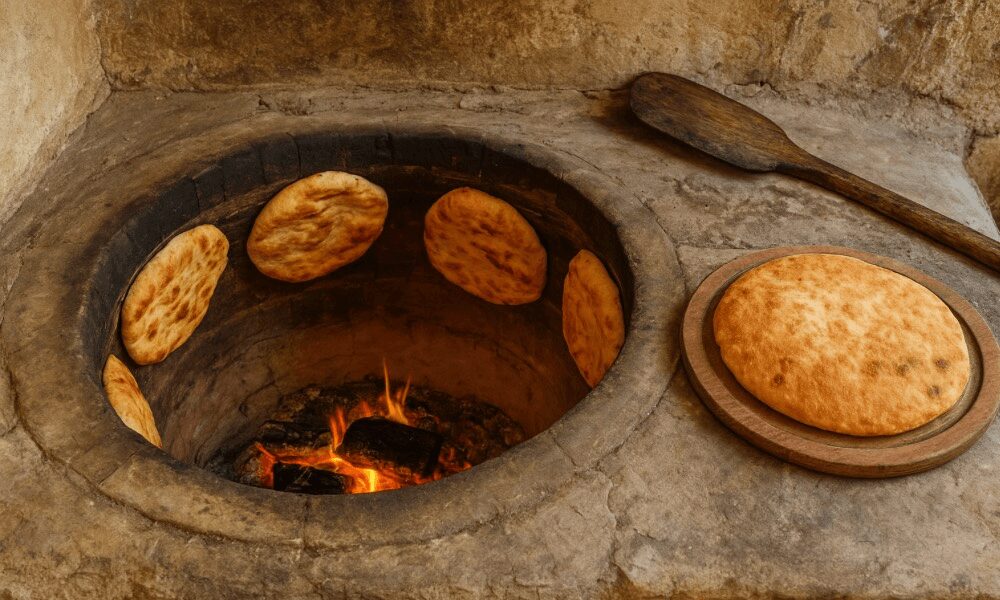
Forgotten Armenian Herbs: Flavors from the Mountains
Armenian cuisine proudly stands the test of time, preserving the purity of its flavors and loyalty to nature. Our ancestors infused their dishes not only with wholesome ingredients but also with the scent and strength of the mountains—through herbs. However, over time, many of these plants have fallen into obscurity.
The highland ranges of Armenia are rich in wild flora. Herbs that were once inseparable from Armenian cuisine are gradually disappearing from everyday cooking. Among these are kotem, shalmany, khndzorik, susambar, wild mint, and daghdz. These herbs not only offer pleasant taste and aroma but also possess immense medicinal potential. Sadly, few people today realize how rich these plants are—both from a culinary and a health perspective.
Kotem, for instance, was considered a favorite seasoning for festive dishes and an irreplaceable ingredient in meat-based soups. Khndzorik, a mildly sour herb, was mainly used in fish dishes, giving them freshness and uniqueness. Shalmany, a beloved herb of grandmothers, became the star of folk teas against colds. While daghdz and susambar are still somewhat known today, they are rarely used in traditional recipes.
These herbs were never just spices. They symbolized a mother’s wisdom, healing, and care. Herb-infused soup became home. Tea brought calm. Pilaf carried memory. These plants haven’t disappeared—they’re simply waiting to be rediscovered, reused, and appreciated once again.
Village Traditions: From Harvesting to Drying
In Armenian villages, harvesting and preserving herbs was a ceremonial process—sacred with generations of experience and the wisdom of time. Early in the morning, when mountain peaks barely emerged from the morning mist, village women would set out into nature—with their baskets, scissors, and large cloths. There was precision in their movements, and respect in their gaze. Herbs were not gathered whenever convenient, but only when the plant was ready to offer its full strength and flavor.
Typically, herbs were harvested during the blooming phase—when the plant had flowered but hadn’t yet dried out under the sun. This itself was a whole science, passed down from grandmother to granddaughter, mother to daughter. People believed that if a plant was picked at the wrong time, robbing it of its natural growth, it would lose its power. This made herb collection a moral responsibility as well.
After harvesting, herbs were brought home, tied in bundles, and laid carefully on cotton cloths. Drying took place in shady, ventilated areas—indoors or in storage rooms. Direct sunlight was avoided, as it was believed to “burn the soul” of the plant.
Even storage was a ritual. Herbs were organized in glass jars, wooden containers, or cloth sacks—according to their purpose. Different herbs were not mixed, as people had clear knowledge of what each one was for: one for digestion, another for respiratory issues, a third for calming the nerves. This knowledge embodied a worldview where nature and human life were intertwined.
Sadly, these traditions are now rarely preserved. However, there are still people trying to revive this culture—making the forgotten once again familiar. People are starting to grow Armenian herbs in their gardens or on balconies, brew village-style teas again, and some are even producing natural herbal products. This return to ancestral wisdom is not only healthy but also hopeful.
The Benefits of Herbs
Although herbs serve as flavor enhancers in cooking, they are primarily powerful tools for health. The beneficial properties of Armenian herbs have been used for centuries in folk medicine. Today, numerous scientific studies confirm the presence of biologically active components in these plants.
Armenian herbs are rich in essential oils, flavonoids, antioxidants, and vitamins. For example, daghdz improves digestion, reduces bloating, and calms the nervous system. Susambar is a natural antibacterial agent, especially helpful during winter months. Shalmany is a primary ingredient in teas used to treat colds, while avena (wild oats) is a great ally for those struggling with sleep and stress.
By drying herbs, we preserve their beneficial properties for long-term use. But today, not only teas have made a comeback—new products have emerged as well: herbal oils, salt packs, herbal baths, and even natural ointments and massage oils made from Armenian plants, offering organic and local health solutions.
Herbs impact not only our physical health but our psychological well-being as well. Their scent, color, aroma, and freshness all have therapeutic effects. Many don’t even realize that a kitchen full of herbs reduces stress. A homemade, aromatic tea aids sleep far better than any chemical remedy. In the end, herbs are a blend of our health, memory, nature, and culture. They are strength, remembrance, and hope for the future—all at once. By returning to these plants, we not only rediscover forgotten flavors and scents but also heal ourselves—physically and spiritually. And that, perhaps, is the greatest power we can draw from our mountains.






